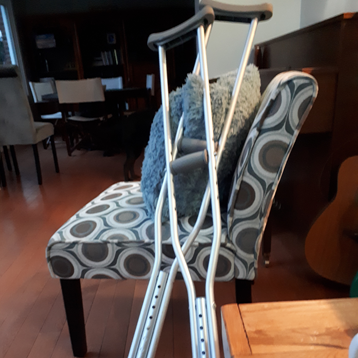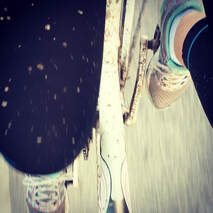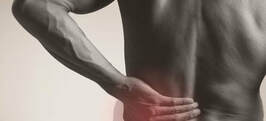|
Tricia Hayton, Registered Physiotherapist Smartphones make our lives much easier. From communication to working from home to entertaining kids in the waiting room, we can no longer get a long without them. However, like most things if they are used too much or improperly injuries can happen. If we take away distracted driving and texting and walking, most injuries from smartphone use are due to repetitive strain injuries. These injuries typically slowly increase over time due to overuse of small muscles or poor postures. On our social media this week, we have discussed some of the most common injuries associated with handheld devices. These injuries include Tech Neck, DeQuervain’s Syndrome (tendinosis of the thumb) and Carpal Tunnel Syndrome. Treatment of these injuries can often be slow and long, as most people are not able to completely stop using their devices. Thus, rest and healing can be delayed. The muscles of the hand are small with long tendons. This anatomy can create slower healing than the bigger muscles of the leg or upper arm. This means that prevention is key. But what can be done?
If you do notice pain and swelling in your hands, heat and slow motions through range can help restore blood flow and reduce pain. If the problem persists, see your physiotherapist. We are here to help.
0 Comments
So now, here is the real question. How do I maintain or continue to progress my training while dealing with an injury? First, I took a couple of days rest. Although fitness will decrease quickly with complete rest, healing was necessary. Since I am training for a triathlon, swimming is an obvious first choice. My ankle and foot quickly returned to full range-of-motion. This is something that should be achieved before returning to any activity involving the injury. If not, your technique will suffer, and you risk an injury to the compensating joint. Now, I have already stated that I love to swim. So, hitting the pool with a few extra laps of freestyle was not an issue for me. But if you are not a swimmer, consider doing a leg only pattern to keep the legs strong and the heart rate high. The other option is water running. Holding a pool noodle under your arms, run through the water with the same mechanics as on land. It is slow and arduous, but again your heart and lungs will work hard, while keeping the foot healing. Next came cycling, which has been difficult this spring due to cold rainy days. Due to this, my initial training happened on a stationary bike. This was a good place to return. Stationary bikes offer more control with intensity. You can also stop if you notice symptoms returning. This can be difficult to do if you are 1.5 km from home, but we won’t bring that up again. Now the sun has come out and I have returned to cycling outside. It is going well, but I was unpleasantly surprised how much work your foot does when you are out of the saddle. This means that I plan my routes carefully. I want to hit some hills so that I am increasing the workload of my training, without causing too much discomfort. Slow gradual hills seem to be the answer. Luckily in Halton Hills, these are easy to find.
Medical testing - not usually the best place to start: Traditional testing such as MRI and X-rays are not typically useful when treating low back pain. Your doctor may order tests to rule out serious pathology, but these results are used to rule out serious issues and are typically less valuable at pinpointing the actual cause of pain. For example, it may clearly tell you that there is no fracture of the bone, or tumour in your spine. However, it is misleading to say that the Degenerative Disc Disease (DDD) or disc bulge is the cause of your pain. Studies have tested people with and without pain. The results are the same – prevalence of DDD and disc bulges were evident in symptomatic and asymptomatic patients (people in pain, and not in pain). Furthermore, the most common age to complain about low back pain is 40 -59 and as people age DDD continue to progress whereas the pain typically resolves. If DDD were the direct case of pain, the pain should increase as we age instead of getting better. This supports the belief that pain is actually a result of other, possibly related, factors. What to do? Have a trained physiotherapist, registered massage therapist or chiropractor look at your movement patterns. If you are not moving ideally, muscle and joints can be stressed resulting in pain. X-rays, CT scans and MRIs are pictures taken when you are VERY still. They do not indicate how well things are moving. In life, we need to keep moving. Change of attitude: We need to get away from thinking that bedrest is helpful for low back pain. Although reduced activity may be necessary in an acute situations it is important not to stop completely. Gentle movement and strengthening can help to break up spasm and decrease inflammation. Perhaps more effectively then ice and heat, and definitely better than bed rest. With mild to moderate low back pain, exercise and strengthening decreases back pain significantly. This is done partially by adding muscular support to your spine. However, pain responses are much more complex then that. Simple movement and strength teaches your brain what normal movement feels like and helps your nervous system adapt to tissue changes. Knowing how your back moves and exercises that reduce discomfort, gives people control over their pain. It may not resolve completely but having the knowledge to reduce the severity and frequency of bad days is great power. Non-Steroidal Anti-inflammatories (NSAIDS – Like Aspirin, Advil, Voltaren etc.), surgery or more complex medical care is useful in only a few cases and typically should only been prescribed when exercise and education have not been successful in returning function and controlling pain. Tricia Hayton is a Registered Physiotherapist and Partner at Physio Sport Med |
Physio Sport Med
Serving all of Oakville in the Uptown / Dundas-Trafalgar Core. Archives
May 2025
Categories |
- Info
- Book Now
-
Team
-
How We Treat
- Sport Medicine Consultation
- Manual - Exercise Physio
- Sport Physiotherapy
- Tissue Injections
- Acupuncture
- Vestibular Physiotherapy
- Osteopathy
- Chiropractic Care
- Concussion Program
- Shockwave Therapy
- Female Pelvic Health
- Male Pelvic Health
- Registered Massage Therapy
- Nutrition Consultation
- On-Field Therapy Coverage
- Custom Orthotics
-
What We Treat
- Sports Injuries
- Low Back Pain
- Osteoarthritis
- Motor Vehicle Accident
- Sprains
- Muscle Strains
- Concussion
- Rotator Cuff
- Tendonitis
- Neck Pain and Headaches
- Hip Pain
- Shoulder Pain
- Elbow, Wrist and Hand Pain
- Foot and Ankle Pain
- Post Surgical Rehabilitation
- Gait and Balance Disorders
- Knee Injuries
- Pelvic Floor Conditions
- Blog





 RSS Feed
RSS Feed